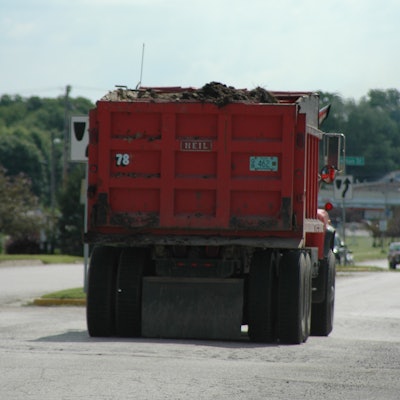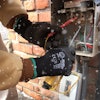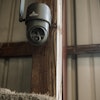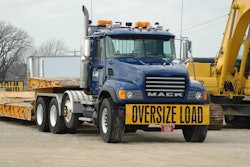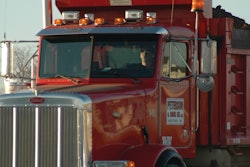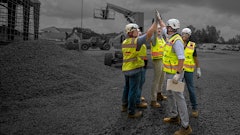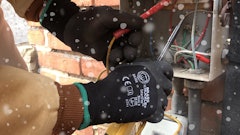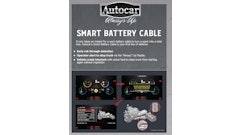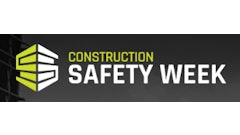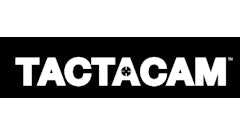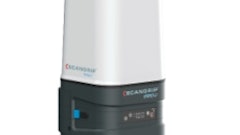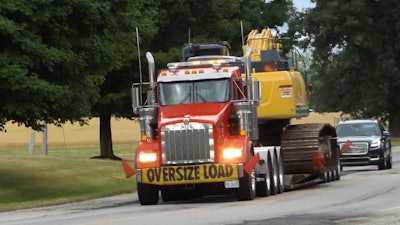
While a substantial amount of attention, and legislation, is centered on the “OSHA Fatal Four” (the four leading causes of construction fatalities), there tends to be far less emphasis placed on motor vehicle crashes. Yet, as John Meola, a practicing safety consultant based in Richmond, VA, points out, of the roughly 5,300 occupational fatalities (which include construction) reported to OSHA for 2020, about 40% were transportation related. This number is fairly consistent year after year.
And while not categorized by industry segment, the National Safety Council reports that an estimated 4.8 million “roadway users” were seriously injured in crashes last year. The costs of such incidents to society, our industry and to construction businesses quickly add up.
Looking beyond the statistics, there are plenty of business reasons to give construction companies cause for concern. “When you put a person behind the wheel of a company vehicle… you automatically have a lot at risk,” says Meola.
Driver behavior and attitude are critical to performance both on and off the road. “The core of the issue is... at the end of the day, the attitude and the sensibility of your employee behind the wheel will determine a lot of outcomes,” Meola comments. “Basically, if you can make that person a safer driver — more perceptive, more aware, more cautious, more conservative — the extended result is they don’t just leave those traits behind when they get out of the truck. If they are uniformly a safer driver, it will almost always translate into a safer worker on the jobsite.
“In other words, with a little work, we can improve our odds of crash avoidance by an exponential number,” he adds.
Instilling a safety mentality in your employees is essential. For those operating a company vehicle, this includes establishing and promoting defensive driving best practices.
Unfortunately, federal OSHA and most of the 28 State Safety Plans offer minimal guidance on defensive driving. This is because it falls under the purview of the U.S. Department of Transportation (USDOT). Meola suggests using ANSI's Safe Practices for Motor Vehicle Operations (ANSI/ASSP Z15.1-2017) as a starting point.
“If you have nothing on the books already, start here, or ask your insurance agent or carrier for guidance,” he says. You may only need pieces of the ANSI Program, but adopt whatever makes the most sense for your operations."
Other sources of (free) information include most state Department of Motor Vehicles (DMV) Driver Handbooks, your state CDL handbook or the USDOT safety information at www.transportation.gov. "Basically, these manuals and other sources offer a starting point for your program, unless you have something better in your library," says Meola. "Plus, they’re digital, allowing easy customization to suit your operation."
Start By Hiring Right
Safe driving starts with safe drivers. Admittedly, finding and retaining qualified drivers, and workers in general, is a challenge. But not just anyone should be allowed behind the wheel of your vehicles.
“If you don’t have a really tight fleet safety program, then you’re kind of left at the mercy of today’s hiring market,” says Meola. In a time of substantial employee turnover, it can be hard to reliably figure out “who to give the keys to the truck to.”
“[You’re] trusting this person with a lot of responsibility,” says Meola. “As a conscientious employer, we need to make the best selection for that driver. This includes checking their MVR, their background and references, doing drug testing, etc. Also, there are commercial screening agencies who can help vet a person’s driving history. You may not need to do a DNA search, but at least get the ‘big picture.’”
Use Available Metrics to Track Performance
“We are a data-driven world. Use this to your advantage,” Meola advises. Technologies such as in-cab telematics, GPS tracking and logging, front- and rear-facing dashcams, etc. can help you to monitor and measure driver performance.
“Now, you can figuratively sit in the cab, and in some cases you should,” says Meola. “The thought process behind this is not to be ‘Big Brother,’ but to protect your interests. Your name is on that vehicle door. You need an established body of rules and performance metrics that you can point to that prove your company is a responsible one.”
The technologies can be used to identify unsafe driver behavior — such as frequent hard braking events that may be an indication of near misses or chronic excessive speed — and enable corrective steps to be taken. “Not to mention a direct ‘over the speed limit’ notice to your desktop... This is an actionable alert,” Meola states. “Someone needs to have a warning notice issued even though the [driver] didn’t get a ticket. Make them watch a safety video. Put a notice in their file... We do what’s called safe work practices counseling. We are not waiting for a speeding violation to show up; that’s too random. The GPS sees it all.
“Our direction to drivers is basically: ‘Listen, this is not just some random thing. Working and driving safely is part of your responsibility,’” he continues. “I realize the concern that an employee may become frustrated and quit if criticized for poor driving. But do you really want this person piloting your truck in the first place?”
Top Defensive Driving Tips
Diving into specific defensive driving best practices, Meola highlights some key points that, if you can get them in front of your drivers, can give them an “enormous advantage” in avoiding crashes.
Keep Your Distance
First and foremost, maintain an appropriate following distance. Meola recommends four seconds, which he acknowledges isn’t always easy to maintain at highway speeds, but can help to avoid the leading category of crashes – struck-from-behind rear end collisions.
“Keep a four-second interval of clear space between you and the vehicle ahead of you. And that applies at all speeds,” he emphasizes. “The message to your drivers is to leave sufficient space ahead of you for reaction, slowing, braking, something going wrong, the load shifting, etc.”
Navigate Carefully
 How drivers maneuver the vehicle on roadways can be a factor in driving-related incidents.ACBM staff
How drivers maneuver the vehicle on roadways can be a factor in driving-related incidents.ACBM staff
And while navigating intersections may seem simple enough, they are the site of the highest number of crashes and other accidents, such as pedestrian hits. “The actual statistic is something close to 40% of all accidents occur in and around intersections,” says Meola, with cloverleafs on interstates an especially dangerous form of “intersection” due to the high speeds and quick driving decisions required.
“We teach a half-day seminar on defensive driving,” says Meola. “The class includes a module just on how to negotiate intersections. It’s not as straightforward as one thinks.”
Don’t Rush It
“Make sure your drivers understand the difference between running fast and running reckless,” Meola stresses. “There is minimal difference in arrival time when your guy is pushing it vs. taking it slow and steady. There is, however, an exponential increase in the risk of having an accident; in which case, you will probably pay through the nose for a long time in insurance premiums.”
Rethinking the time of day your drivers need to be on the road can help improve the odds of incident avoidance. “Think what an accident will cost vs. the cost of making your run early in the morning or late at night vs. during rush hour, or when school is getting out,” says Meola. "This is called ‘route selection and planning,' and we should all probably do more of it."
Pay Attention to Distractions
It should be no surprise that driver distractions are on the list of critical safety factors. Meola cites statistics showing that about 17% of all drivers have some form of impairment on an average weekday. This can include talking or texting on a mobile device, impaired vision, drinking under the influence, a medical condition or event, etc..
“On the weekends, that number goes up to 23%, which is effectively one out of four drivers. Only you don't know which one out of the four,” Meola comments.
A company policy, and even technology (such as systems designed to disable texts or certain apps), should be in place to minimize the distractions that can negatively affect driver behavior. But drivers also need to be aware of the distractions that others may be experiencing.
“We need to be aware that it's not just us," says Meola. "We could be the best driver on the planet. It's the other guy who’s distracted."
Make It Personal
A defensive driving program is only valuable if it’s put into use. To encourage adoption of best practices behind the wheel, Meola advises making it about more than company policy.
“One thing that we do, and it's becoming more prominent throughout the safety sector is make it family oriented. Explain to your driver and to the crew that, ‘Look, this is not just about the company or compliance. This is about you, the people who depend on you, your loved ones,’” Meola advises.
 Instilling a safety mentality in employees at all times is essential. And for those who drive company vehicles, this includes promoting defensive driving best practices.ACBM staff
Instilling a safety mentality in employees at all times is essential. And for those who drive company vehicles, this includes promoting defensive driving best practices.ACBM staff
“In other words, the education, the information, the metrics that we apply at work, well, yeah, get it for work, obviously. That's why we do it,” says Meola. “But that's not only why we do it. You have to take this home. We don't want anything happening to you on the job or off the job, or to your family. And most people understand when you connect at that level.
“The thing that we really need to control in a defensive driving equation is the driver’s attitude," he continues, including what can motivate them to work and drive safely. “That employee will tell you he loves your company, he loves his job... Well, I'm here to tell you, he probably loves his family more. So, when you start connecting with things that really do apply, they do matter, you've kind of made a better connection.”
More Tools to Make Good Choices
Some employees may argue that they are already good drivers with no history of accidents or offensives. But defensive driving is about giving them additional tools that will help them make educated choices that can increase their chances of avoiding potentially hazardous situations.
“What's the best outcome that I can achieve here? Slowing down? Normally, yes, but not getting close enough to the vehicle in front of me that I have to slow down is better," Meola states. "We want this person at least aware of what the metrics are in any given situation. Drivers should be aware of what is their braking distance, following distance, line of sight... Do they have the load secured?
“If you're good on the job, you're probably going to be a fair to average driver," he acknowledges. "In our rulebook for defensive driving, average is not good enough. We want the person informed, educated, knowledgeable, at the top of their game to make them an above average driver, because their job is to beat the other drivers who could be impaired, distracted, etc. You definitely want to come in ahead of that curve.”
John Meola is a practicing safety consultant based in Richmond, VA, serving private long-term clients primarily in the construction industry.

